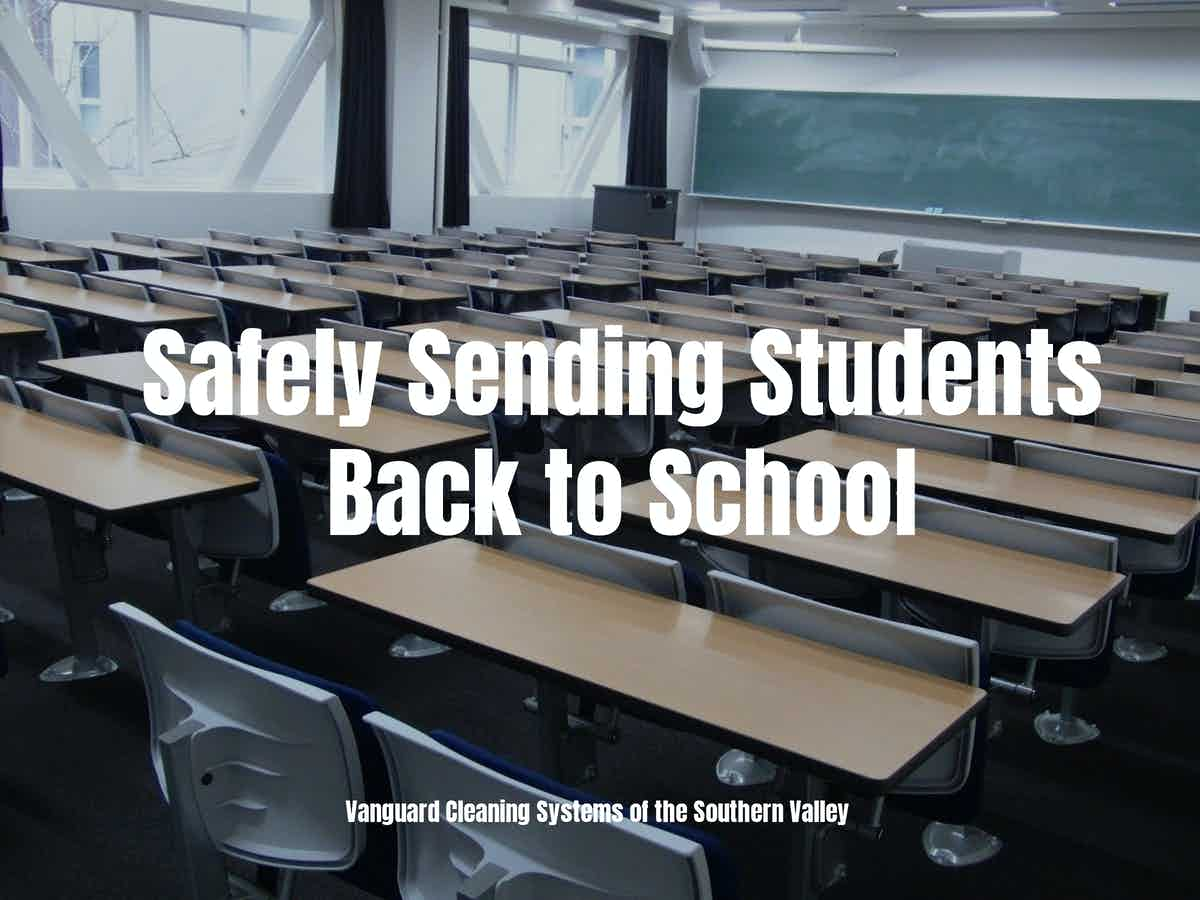Before COVID-19 and its subsequent variants, elementary, high school, and college students were exposed to multiple pathogens and pathogenic bacteria that often resulted in serious illness, placing an enormous burden on the education system and taxpayer dollars.

The Burden of Disease in US Classrooms
While SARS-CoV-2 and its variants dominate the headlines and minds of students, parents, and teachers, the simple fact remains that illness in the classroom is commonplace, expected, and old news.
Besides chronic illnesses such as asthma, numerous, often dangerous, and sometimes deadly germs and bacteria lurk on nearly every surface in the classroom and throughout the school facility that makes kids and teachers sick.
When the number of individual sick days become excessive for students and teachers--conventionally referred to as chronic absenteeism--significant, widespread, and long-term financial, educational, and social impacts are felt.
Public school teachers in the U.S. miss 9 or 10 days of school every year. This has implications for both student learning and school finances:
Researchers have found that being taught by a substitute for 10 days a year has a larger impact on a child’s math scores than changing schools and that being taught by a substitute for even one day is more detrimental than replacing an average teacher with a terrible one.
The annual national cost of teacher absenteeism is estimated at $25.2 billion, with $4 billion due to stipends for substitutes and associated administrative costs.
Excessive teacher absenteeism carries additional financial burdens in the form of substitute teacher pay.
According to a 2009-2010 report from the U.S. Department of Education based on data from surveys of 57,000 schools, U.S. teachers take off an average of 9.4 days each or 5% of regular school days, during a typical 180-day school year, and substitute teachers are called to fill in for absent teachers
The financial cost of substitute teachers—who are typically paid in the $60 – $100 per day range—is substantial.
Raegen Miller, now vice president of research partnerships at Teach for America, has estimated the cost of substitute teachers at $4 billion annually, or about 1% of total K-12 spending.
Substitute Teachers are a Large Presence in American Schools
Data regarding student absenteeism directly resulting from colds, influenza, and other communicable diseases such as strep throat, staph, and diarrhea are dated and difficult to come by.
However, a 1996 study conducted by the CDC reported that school-aged children miss;
- Approximately 22 million days of school per year due to the common cold, and;
- Nearly 38 million days of school per year due to influenza.
A 2016 study published by the US Department of Education reported that approximately 1 in 6 students miss three or more weeks of school per year, totaling more than 100M lost school days, resulting in:
- Challenges in meeting early academic milestones.
- Dramatically increased chances of dropping out.
- An increased likelihood to experience poverty and diminished health, and interactions with the criminal justice system as an adult.
Cleaning for Health in the Classroom
Cleaning for health in the classroom to improve student and teacher attendance, raise performance, and protect occupant health should begin with assessing all current facilities, currently employed methods, available tools and products, available labor resources, protective equipment, and training programs.
Following this assessment, we recommend:
- Eliminating highly toxic cleaning and sanitization products from use and replacing them with sustainable and safer alternatives published by the EPA.
- Upgrading to microfiber-based tools.
- Investigating advanced cleaning and sanitization equipment--electrostatic sanitization appliances, automated floor scrubbers, UV-C HVAC lighting, and Chemical Management Systems to reduce resource waste, improve indoor hygiene and air quality, simplify labor assignments, and significantly improve occupant health and safety.
- Establish infectious disease monitoring and reporting programs within the school, classroom, district, and community and adjust cleaning and sanitization schedules accordingly.
- As needed, focus on increasing cleaning frequency and targeted fomite sanitization, and avoid blanket disinfectant applications unless a facility is considered compromised or as a routine deep sanitization strategy.
- Use team cleaning strategies to improve cleaning outcomes and efficiencies.
- Establish a detailed cleaning checklist that includes what products and tools are to be used where and when, how often, and how much.
References & Resources
- Back-to-Campus in a Safe Way: Health Considerations for Institutions of Higher Education
- Beyond COVID-19: Protecting Children from Illness at School
- Chronic Absenteeism in the Nation's Schools
Takeaway
Safety in the classroom is of paramount concern this year as many students and teachers are returning for the first time after an extended absence due to the pandemic.
Maintaining classroom hygiene requires clearly defined strategies that extend beyond cleaning to community monitoring and custodial staff training.
For many districts, implementing the tools, strategies, training, staffing, and management necessary to surmount these challenges will likely prove cost-prohibitive, potentially inviting cost-cutting approaches that could put student and teacher health at risk.
Outsourcing is a proven method for onboarding rising in-demand sustainable cleaning for health services, tools, and expertise for a fraction of the cost of maintaining a similar service with direct hires.
If you would like more information regarding the effectiveness of high-performance infection prevention and control measures, or if you would like to schedule a free, no-obligation onsite assessment of your facility's custodial needs, contact us today for a free quote!
In Bakersfield, CA, call (661) 437-3253
In Fresno, CA, call (559) 206-1059
In Valencia CA, or Santa Clarita CA, call (661) 437-3253
In Palmdale, CA or Lancaster, CA, call (661) 371-4756

